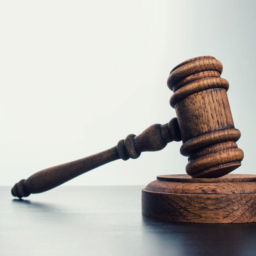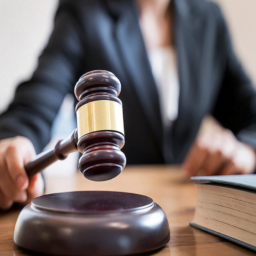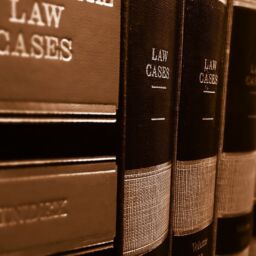
INTRODUCTION: STYRENE GAS KILLS 11 PEOPLE
On 7th may 2020 when covid-19 is spread all over the world and everything is in lockdown then a tragedy happens in Visakhapatnam (VIZAG) 11 persons were killed and several hundred people were hospitalized when styrene gas leaked from polymers factory which is owned by L G Company which was of South Korea. On 8th May 2020 national green tribunal (NGT) mandate to provide compensation to victims of environmental damage and also they have asked for Rs 50 crore, it was a case of suo moto.
In Vizag, the effect was around 3-4 KM area from the industry where people was on lockdown and that area was contaminated by covid-19 (red area) because of gas leakage many of them rush away from this place and is very harmful. When at midnight gas leaked many people who lived at that place suffered a lot and fell unconscious and not able to breathe properly.
Styrene is a chemical used in plastic and rubber manufacture. It is a benzene derivation and also a primary synthetic chemical. Styrene (C8H8) is a flammable, irritant, and health hazard. It is a colorless substance mix with water and air easily.
Is styrene is harmful or not question arises? According to the international agency for research on Cancer, an affiliated body which says it is a cancer-causing agent. Excessive exposure to styrene may irritate eyes; unconsciousness and also a problem in inhaling. And also affect the central nervous system of a person. Styrene is a chemical that does not have an antidote to these toxic.
As per the forensic science laboratory team, the leakage of styrene is due to human error and negligence in maintains during the lockdown. [1] As the report says human negligence because of falling in maintain in the temperature (below 20 degrees). Due to that self polymerization occurs and the temperature goes to 150-degree heat, as the cooling system was not maintained properly then vapours of gas started coming out and cause breathing problems. Also found that the storage tank is having almost 1900MT styrene as it was not used for a long time and also not maintained in lockdown.
Almost 36 years, the Bhopal gas tragedy happens and at that time only IPC was there to use as the provision to give justice. In 1984 this incident happened at union carbide India ltd. Pesticide plant in Bhopal. They both are a parallel case in both the gases have been leaked when the factory is closed for many days.
The leakage is hazardous and the scale of affecting people is also more. It was said by the NGT that it is the case of strict liability. The rule of strict liability came from the case Ryland’s v Fletcher. But it has become obsolete and now with changes, it becomes an absolute liability. The evolution came from the Oleum gas leak case of Delhi in 1986.
RELEVANT PROVISIONS OF THE ACT
At the time of the Bhopal case there was no provision for it except IPC for criminal liability after that in India there were laws made for the chemical disaster. In the Indian penal code (IPC) the charges that were frame in the case was 304A which deals with negligence and caused death which also gives punishment of 2 years and fine or both. Then it was reframed again and new laws related to regulation in the environment and prescribed for the safety and give penalties.
1. BHOPAL GAS LEAK ACT,1985
In this act central government get powers to secure claims from the situation. Deals with giving compensation for the claim. This is also known as the processing claims act. It came in the 36th year of the Republic of India.
It dealt with claims –
- Speedily
- Effectively
- Equitably
2. THE ENVIRONMENT PROTECTION ACT, 1986
An act to provide for the protection and improvement of the environment, this decision was introduced when the Bhopal gas leak case has occurred and it was decided in the UN conference on the human environment. This is for the improvement of the quality of the environment.
3. THE PUBLIC LIABILITY INSURANCE ACT,1991
This act is provided for the immediate reliefs to the affected person after hazardous tragedy occur this is sought of insurance to the person who is affected by it. In this, there is no fault liability against the owner of the hazardous substance. From which those persons who are affected by that have to give claims to them in terms of the insurance. This provides compensation for-
- When any hazardous substance/property is there
- Any other property from which they got injured
4. THE NATIONAL ENVIRONMENT APPELLATE AUTHORITY, 1997
This act hears appeals concerning restricted areas of industries, operations, or processes that safeguard the environment protection act.
5. NATIONAL GREEN TRIBUNAL,2010
These are special tribunals for the disposal of cases and provides compensation to issues effectively related to the environment. It was formed by seeing Article 21 of the Constitution that provides the right to live healthily. This committee has suo moto on the Visakhapatnam gas leakage case. This deals with the treatment of hazardous substances chemical and arrangements for treatment. Section 14 and 15 of it applies to it.
6. THE STRICT LIABILITY RULE IS FOLLOWED BY NGT
Leakage of hazardous gas largely and affect public health and the environment. The rule of strict liability was evolved in 1868 in Ryland’s vs. Fletcher. The rule of a strict liability says three things which apply the rules to the case if these are there-
- Hazardous substance
- Escape
- Prima facia evidence
But there are exception /defence to it that is –
- The plaintiff own fault
- An act of god
- Act of the third party
- If the hazardous activity is carried by the plaintiff
This gives the chance to the accused to get relief from the act done and not to give compensation to the victims. So by replacing this rule with the rule of absolute liability.
7. THE RULE OF ABSOLUTE LIABILITY
This rule came from the Bhopal gas leak case where it says is the person has done by mistake or by knowingly if the hazardous substance is on that person’s place which is dangerous and also harmful and got released because of that it affects the people than has to pay compensation. Three essentials of it –
- Hazardous substance
- Escape
- Compensation
8. CHEMICAL RULES,1989
In this act, there is a list of hazardous substances list which specifies the hazardous chemicals. This provision is in terms of The Environment protection act. And styrene was listed in that list which says it is dangerous and harmful.
CRITICAL ANALYSIS
- The NGT has taken the suo moto cognizance for the relief and environment protection and demands for the RS 50 corer as compensation. As it causes damages to the lives of the person and the health of persons. The leakage of hazardous gas (chemical) is harmful. And NGT is taking the rule of strict liability.
- In 1984 the union carbide corporation in that it was occurring and there also this rule was applicable due to that union carbide corporation has taken advantage of it, due to that affected persons get the minimum amount of compensation as there were no strict rules where there. So there is a need for the rule of absolute liability.
- Then in 1986 the Bhopal gas leak case also the strict liability rule was taken and the same thing occurs but from that, it was clear that there is a need to replace the rule of strict liability from the absolute liability .in the case of oleum gas leak at that time the suit was rejected by the court for the strict liability. in which says that any hazardous activity in the property occurs and due to that damage caused to workers or public and environment then there are no exceptions to it which are lead down in Ryland’s v. Fletcher –
- In Ryland v. Fletcher is the case of strict liability –
In this, both lands were neighbours of each other. Ryland’s owned mill and Fletcher has land which has mines and shafts. As Ryland wants to build a water reserve for his land so he gave an act to independent contractor and engineers and when the water was realized the shafts broke and it goes to the mines which caused a huge amount of loss due to that the suit was made for the compensation of it. As Rayland was held liable for it, this is the case of no-fault liability means if it is the owner’s fault or not the owner is liable for it. But there is a loophole in strict liability that gives chance for the defence which sometimes leads to change the situation.
CONCLUSION
The Vizag gas leakage the LG company which caused a styrene gas leaked from the industry which caused lots of problems like affect the lives and health of public and pollute the harmful environment. The government should make lots of steps to improve the conditions. The conclusion is that the gas killed almost 11 people and many are in hospitals for treatment and caused a hazardous disaster over that area and near villages. If the person is having a hazardous substance in his place then the accountability is on that. More and more amount of necessary steps and maintenance are needed. As to protect both human beings and the environment.
Author(s) Name: Parneet Kaur Chawla (ITM University, Raipur)
[1] M.timesofindia.com
















